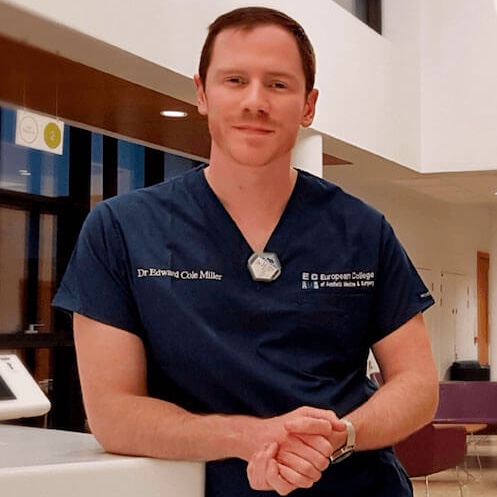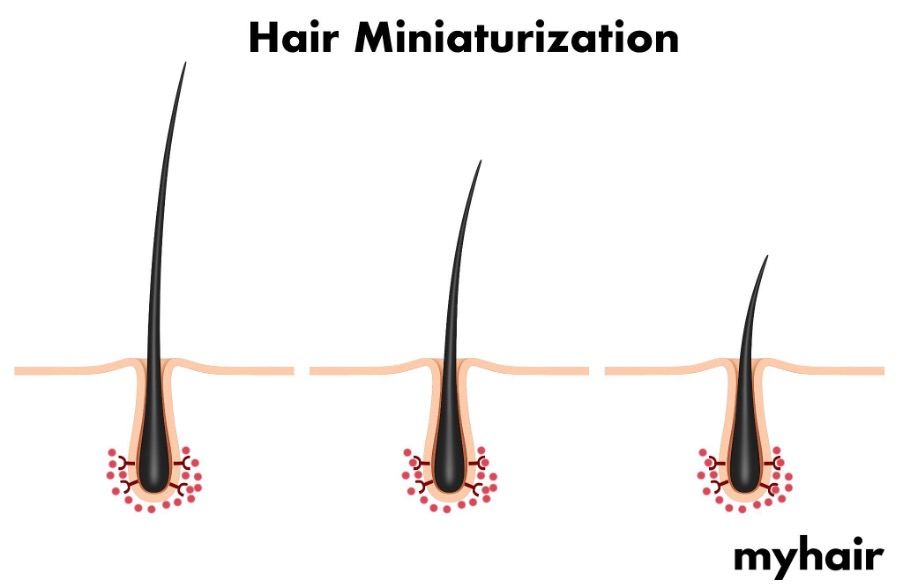You’ve probably heard of laser treatments to remove unwanted hair, but have you heard that using lasers can promote hair growth? This procedure, called low level laser therapy, is one of the newest hair loss treatments available. While it can be obtained in medical centers and aesthetic clinics, it’s also possible to just buy your own low level laser device to use at home.
Lasers in medicine
Lasers have been around for a while. According to a study in the MedCrave Online Journal of Orthopedics & Rheumatology, the first functioning red laser was created in 1960. Another seven years passed before “laser biostimulation” was successfully demonstrated. But it wasn’t until fairly recently, in the 1990s, that medical laser treatments became truly popular.
If you wear glasses, you’re probably aware of one of the most popular laser treatments, LASIK (laser vision correction). Today, lasers are also used to treat a wide variety of medical issues, including chronic pain, acne, wrinkles, and cellulite.
One of the most recent developments of lasers in medicine has been in relation to hair loss. This type of photobiomodulation is called low level laser therapy or LLLT. Although this therapeutic has only been around for a few decades, a review in the Dermatology Online Journal reported that low level lasers have been known to induce hair growth since 1967.
How does low level laser therapy work?
LLLT is known to have a biostimulatory effect on the body, like all cold lasers. These lasers, which are quite the opposite of the burning hot lasers often depicted on TV, generally have a wavelength around 650 to 900 nm.
Despite counteracting hair loss since 1967, scientists still aren’t completely sure how LLLT works. But of course, researchers and device producers have quite a few theories.
“Plants convert sunlight into energy, which they use to grow. This is similar to the process of photobiomodulation.
Certain wavelengths of light, whether laser or LED, are absorbed into the outer layer of skin where your hair follicles reside. The light creates ATP (cellular energy), which strengthens both the cells and the surrounding area creating a perfect scenario for hair growth. Follicles expand, hair gets thicker, and new hairs grow from the now open hair follicles.“
A recent review published in the Skin Appendage Disorders journal says that low level laser therapy is thought to influence the hair growth cycle. It may prolong the growth phase of the hair growth cycle, stimulate follicles to convert vellus hairs (like the fine peach fuzz on your face or body) into terminal hairs (like the long, dark hairs on your head), and prompt resting hair follicles (those in the final phase of the hair growth cycle) to produce new hairs.
Reviews in Lasers in Medical Science and Lasers in Surgical Medicine say that LLLT might work by generating anti-inflammatory signalling molecules and antioxidants and increasing blood circulation. This, in turn, might accelerate the division of skin cells and stimulate hair growth.
Do laser hair growth treatments really work?
If you’ve never heard of laser hair growth treatments, don’t worry — they’re actually pretty new. The first LLLT device, the HairMax® Laser Comb, was cleared by the FDA for use on men with androgenic alopecia (male pattern hair loss) in 2007.
Unlike medications or high risk medical devices, which are granted FDA ‘approval’, LLLT devices like the HairMax® Laser Comb only need to receive ‘clearance’: specifically, 510(k) clearance. This is why LLLT is still usually considered to be one of the FDA-‘approved’ treatments for hair loss. Devices granted this clearance are compared with non-functional (sham) devices and proven to not cause harm.
The Dermatology Online Journal reports that the hair loss experts from this initial study concluded that the HairMax® Laser Comb was effective as a hair loss treatment, increasing terminal hair growth. It was also found to improve hair texture and quality even when no regrowth occurred.
All that being said, LLLT devices weren’t compared to the existing treatments, minoxidil and finasteride, or any other alternatives for quite some time. It’s only in the last few years that studies comparing laser hair growth treatments to other FDA-approved alternatives have been performed.
Modern day LLLT
Just over a decade later, these laser hair growth devices are much better understood and have been much more thoroughly tested. The Skin Appendage Disorders study reported that all of the LLLT randomized clinical trials it reviewed were able to produce improvements for people with androgenic alopecia.
These trials reported that LLLT treatments over a period of 16-26 weeks were able to increase hair count, growth, and overall coverage. Additionally, most of the studies showed that their devices were safe and caused few to no side effects. Any side effects reported were mild, like dry skin, irritation, or tenderness, and were easily resolvable.
The same study also reported that there are now around 30 FDA-cleared LLLT devices for pattern hair loss. These include devices made in the forms of combs, brushes, hoods, helmets, caps, and headbands.
As more and more LLLT studies are performed, it’s becoming clear how much potential this new hair loss treatment has. The biggest downside remains the cost of the treatment. Whether you’re visiting clinics or buying your own device, LLLT is likely to cost hundreds or thousands of dollars.
LLLT and other hair loss treatments
If you’re new to losing your hair, chances are you’re considering all your options. The two most common and most affordable treatments, minoxidil and finasteride, are topical and oral, respectively. Both of these are FDA-approved for androgenic alopecia but work in different ways. People with more cash to splurge may also opt for options like hair loss transplants, and may even combine minoxidil or finasteride with such surgeries.
LLLT vs. minoxidil
Minoxidil is a topical hair loss treatment that’s applied twice a day, in the morning and in the evening. It works as a vasodilator, stimulating blood flow in and around the hair follicles on your scalp. Both 2 and 5 percent solutions are FDA-approved for androgenic alopecia.
Originally developed as a blood pressure drug, minoxidil was converted into a topical formulation and became the first FDA-approved hair loss treatment. There are countless studies confirming minoxidil’s effectiveness. It’s also very affordable and available over the counter.
There aren’t too many studies comparing LLLT and minoxidil. However, a doctoral thesis from the Mazandaran University of Medical Sciences that compared an LLLT headband and 15 percent minoxidil found that both of these treatments were able to produce similar results in people with androgenic alopecia. While patient satisfaction was also reported to be similar, there were more side effects in people using this high strength version of minoxidil.
The previously mentioned Skin Appendage Disorders journal study reported that in one of the studies it reviewed, LLLT was able to produce slightly better results than 5 percent minoxidil in people with pattern hair loss. Notably, these two treatments can be safely combined. The same study reported that LLLT and 5 percent minoxidil were able to produce significantly better results when administered simultaneously.
LLLT vs. finasteride
Finasteride is a dihydrotestosterone (DHT) blocker. DHT is a hormone that’s considered to be one of the major components behind androgenic alopecia. Blocking DHT can prevent male pattern hair loss from progressing.
As an oral medication, finasteride is easy, convenient, and affordable. It’s generally taken once a day. The main downside to this medication is that it’s accompanied by some unpleasant side effects, like impotence. Since this medication needs to be taken life-long in order to counteract pattern hair loss, these side effects can be a major deal breaker for people considering this medication.
A recent study in the Bulletin of Physical Therapy compared finasteride to use of an LLLT comb. The results of this showed that LLLT and finasteride were equally effective in improving hair regrowth in people with pattern hair loss. A second Lasers in Medical Science review also stated that these two treatments can be safely combined.
LLLT and hair loss transplants
Hair loss transplants are surgical hair loss treatments, most commonly chosen by people who have allowed their hair loss to progress to the point that they are bald or visibly balding. You might also recognize these procedures as a popular choice among celebrities — in part because they come with a hefty price tag, like any surgery.
Two types of transplants are commonly performed: FUE (follicular unit extraction) and FUT (follicular unit transplantation). FUE extracts follicles and transplants them individually, while FUT removes a strip of skin from the back of the head, extracts the follicles, and then transplants them.
Hair transplants are often combined with minoxidil, finasteride, or other experimental hair loss treatments in order to improve the surgery’s final results. According to a study in the Journal of Lasers in Medical Sciences, administering LLLT before performing a hair loss transplant had no effect. So far, no other studies have combined LLLT and hair loss transplants, or performed LLLT after a transplant for a prolonged duration.
Takeaway
If you told people you wanted to use lasers to regrow your hair 15 years ago, most people would have laughed at you. Yet over the last decade, low level laser therapy has exploded. It’s now been shown to be as effective as FDA-approved treatments like minoxidil and finasteride.
LLLT is non-invasive and has few reported side effects. The downside is that as one of the newest treatments for hair loss, it’s also quite expensive. Buying your own device can range from hundreds to thousands of dollars, and receiving LLLT in a clinic is likely to cost you about the same amount.
If you don’t mind forking over the cash, talk to your doctor about combining LLLT with minoxidil or finasteride. Although studies are limited, LLLT combined with minoxidil seems to produce results better than either of these treatments alone.





